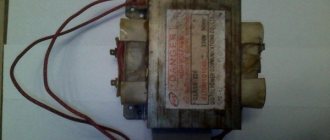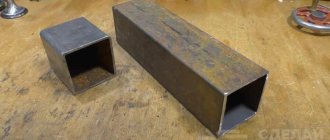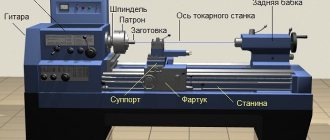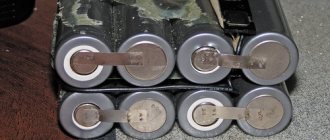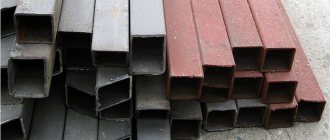The purpose of this article is to introduce you to the most common metals from which spirals are made and discuss their characteristics, advantages and disadvantages. Some wires can only be used in watt mode, some in temperature control mode and there is an exception that can be used in all modes.
The main goal is not to overwhelm you with technical specifications, but simply to give you an idea and help you choose the metal for the coils, the material that will best suit your vaping style. The main attention will be paid to single-core wires, no exotic spirals - clapton, alien, braids, etc.
Diameter, resistance and TCR
There are basic characteristics that apply to all wires, regardless of the material from which they are made. The first thing you should pay attention to is the diameter of the wire. In the metric system, the diameter is measured in millimeters (for example: 0.4 mm), in the imperial system the diameter is marked as a gauge (gauge) and is indicated by a digital value (for example: 26 gauge). If everything is clear with millimeters, then in the imperial system, the higher the caliber, the smaller the diameter of the wire. For a better understanding or quick conversion to millimeters, you can use the winding calculator, where in the “Wire diameter” field you can see the main dimensions and their values.
The second feature of the wire is that as the diameter increases, the resistance decreases, but it takes more time to heat it up. Thick wires of 0.8mm and 0.6mm will have low resistance and will take longer to heat up than thinner wires of 0.4mm or 0.3mm.
Temperature Control (TC)
For temperature control, metals are used whose resistance depends on the temperature of the coil (Temperature Coefficient of Resistance (TCR)). To regulate power, your mod reads the resistance every 0.25 seconds and supplies the required power to the coil to maintain a certain heating temperature.
I promised that the article would be without technical difficulties, but with temperature control it won’t be easy. Therefore, a simple example: the box mod knows the resistance of the cold coil and the TCR, with the help of which it easily calculates the temperature and decides how much power to supply to the coil, and if the temperature is higher than the set one, then stop supplying electricity altogether. All calculations occur 4 times per second, which is why it will be difficult for you to see and feel any changes in the operation of the mod. I hope it was clear, now let's move directly to the wires and spirals.
Temperature control in modern devices
It's no secret that temperature control appeared about half a year ago, or rather in the summer of 2015 , and instantly became one of the discussed topics in vaping.
Let's say this is a kind of new standard that manufacturers of electronic cigarettes should measure up to.
The vaping industry does not stand in one place, we didn’t have to wait long, and today there are a huge number of temperature-controlled vari-watts on store shelves.
I mentioned Variwatt for good reason: the temperature control of an electronic cigarette is its direct successor, which, with the help of new functions, improves the concept of power regulation.
Each mod with TC allows you to adjust the power, but with a preset temperature, maintaining it is given high priority and if the coil gets very hot, the board will give the command to reset the power to cool it down.
At the same time, for the vaper the feeling of vaping remains virtually unchanged: it will seem to him that the power has remained at the same level. When the coil cools down, the board will, on the contrary, increase the power, maintaining the temperature in any case.
How does thermal control still work? The whole secret lies in the features of the evaporator material - titanium and nickel . Both metals tend to increase resistance when heated and do so very smoothly.
When a new evaporator is installed, the mod board remembers the resistance of the cold coil, and then based on the number of Ohms it can determine how hot the coil is. The use of titanium and nickel allows the electronics to determine the exact temperature.
Other materials (the same kanthal), unfortunately, do not have a clear and direct interaction between heating and resistance and their use on temperature-controlled boxes is reduced to zero.
And, of course, for full-fledged operation of temperature control, you need appropriate devices, of which there are more than enough today (the same Kanger Subtank, Eleaf GS-TANK TC, Sigelei 150W TC Sigelei 150W TC and many, many others). The tanks differ from conventional ones in the ability to install titanium and nickel heads, and the peculiarity of the mods lies in a special board that “understands” the resistance indicators of nickel and titanium.
Temperature control allows you to adjust the temperature within the accepted standard ranging from 200 to 600 degrees Fahrenheit or from 100 to 135 degrees Celsius. The unit of measurement automatically switches from Watts to degrees when adjusted. Some mods have a switch to Joules, which determine the heating rate of the coil. It can be set manually, or you can entrust this matter to the automation, believe me, “it knows better” and will select the required optimal value.
We consider the following points to be advantages:
1) Cooler steam (by setting the temperature, we limit the heating of the coil “in vain”, thanks to this the steam will become cooler and more pleasant to the taste); 2) No burning aftertaste - the saga of Harry Potter and his adventures in vaping is completed.
The mod board monitors the heating of the coil and promptly reduces the power when overheating, thanks to this the possibility of burning out the wick is completely eliminated; 3) The heating temperature of the coil does not depend on the airflow and the amount of liquid (when the liquid starts to run out, the box board will simply produce less steam or stop heating altogether); 4) The spiral and wick will last much longer; 5) Reducing battery and fluid consumption; 6) Rich taste of the liquid (by simply selecting the temperature, you can discover familiar liquids in a new way); 7) Simplified setting - we forget about Watts, Ohms and Volts, it is enough to set a comfortable value in Celsius, Fahrenheit or Joules; The taste and saturation of steam do not depend on airflow
And, of course, there are minor disadvantages:
1) The cost of devices and selection of serviced materials will add up to a significant sum; 2) The danger of releasing harmful substances when using nickel - although this is a controversial point that is discussed every day today, keeping silent about it is a crime; for those who want to neutralize this threat, titanium should be used in maintenance.
As we see, temperature control is a trend of the present and future, conventional varivolts/variwatts remain a thing of the past, and are being replaced by new technologies that dictate the development of vaping. There are many more interesting things waiting for us in the future. Thick and tasty for everyone, both on nickel and on titanium and on kanthal and on………
Kanthal, also known as fechral (FeCrAl)
Kanthal is the name of the manufacturer, which has become a household name in the vaping community. It is an alloy of three metals - iron (Fe), chromium (Cr) and aluminum (Al). The alloy is called fechral (FeCrAl), and can sometimes be found on sale under the name eurofechral. There are no differences between Kanthal and Fechral, except that Kanthal A1 wire also contains 0.15-0.4% titanium, and has a slightly increased operating temperature and melting point. Otherwise, there are no differences and usually the canthal is equal to the fechral.
Kanthal works well in wattage mode and is the most popular material for coils. It is easy to work with, it does not spring, especially after burning, and oxidizes very slowly. This makes it possible, along with changing the cotton, to once again burn through the bare coils, clean off carbon deposits from them and use them again. As a result, such coils can last for months if they are properly maintained and cleaned.
The big advantage of Kanthal is its low TCR, so it cannot be used in temperature control mode. This means that regardless of temperature, the resistance remains unchanged, which at 30 °
C, which is at 200
°
C.
You can buy kanthal at any vape shop, where you can get yourself a couple of meters of wire with a diameter of 0.4 mm to start with, the price can reach up to 50-100 rubles per meter. This is enough for most standard windings and simple experiments.
pros
- Ideal in variwatt mode and on mech mods
- Kanthal is easy to work with, twisting, bending, etc.
- Doesn't spring back and keeps its shape
- Sold in every vape shop
- Inexpensive
Minuses
- Does not work in temperature control (TC) mode
Mods with temperature control
We invite you to familiarize yourself with the popular mods whose device is supported by TK:
- Joyetech eVic VT has a stylish design, which is very attractive to the buyer. Considered one of the first temperature-controlled devices. Battery with a reserve of 5000 mAh, power – 60 Watts.
- Sigelei TC 150W - is remembered primarily for its large size, as well as maximum power - 150 watts. The package includes two replaceable 18650 batteries. For all its advantages, it has one drawback - high cost.
- Eleaf iStick TC 40W is an affordable mod for beginners with a power of 40 Watts. Battery with a reserve of 2600 mAh.
- Cloupor GT 80W - in addition to the TK, it also has variable watt and variable voltage. The power of the device is 80 watts. Includes two removable batteries.
Nichrome
Another type of wire well suited for spirals and vari-watt mode is nichrome (NiCr) . Nichrome is an alloy of nickel and chromium, in some cases a little iron may be added to it.
In vari-watt mode, nichrome behaves the same as kanthal, but for the same size and thickness will have a lower resistance than kanthal. In addition, nichrome heats up faster. But like kanthal, it does not spring and the spirals retain their shape well after burning. You need to be as careful as possible with burning, the combustion temperature of nichrome is lower than that of kanthal and if you are used to burning kanthal heavily, then there may be problems with nichrome, it may simply start to burn and melt. Be careful and do not burn through the nichrome too much.
The main disadvantage of nichrome and why it is less popular is that a large number of people on earth are allergic to nickel. You may not even suspect it and live peacefully all your life, and then try to vape on nichrome and feel a sore and itchy throat, and the appearance of sores in the oral cavity.
Note: The author of this article is allergic to nickel and I can tell you in detail about ulcers on the mucous membrane and how to deal with them. But believe me, it’s better to just stop vaping with nichrome if you are allergic to nickel.
You most likely won’t be able to buy nichrome in a vape shop; it is a very unpopular material for coils. But faster heating and lower resistance can give you a new vaping experience. Another thing is that nichrome will most likely have to be ordered from China.
pros
- Warms up faster than Kanthal
- Nichrome is easy to work with, twist, bend, etc.
- Doesn't spring back and keeps its shape
Minuses
- Low combustion and melting temperature
- Many people are allergic to nickel
- Hard to find in local stores
Myths
The arrival of something new is always followed by the appearance of myths.
Let's find out which of this is true and which is false:
- PriTC can be set to any temperature - a myth. In fact, mods allow you to adjust the indicator within the range of 100–315 °C.
- Vaping with TC can be harmful to health – a myth. When heated, nickel releases hazardous substances with temperatures ranging from 600 °C. What kind of e-cigarette can “heat up” to such a state?
- The evaporator must be burned out before you start using the TC - a myth. On the contrary, this cannot be done. You will only ruin the device.
- The power indicators on the mod screen do not correspond to reality - true. This indicator actually depends on the coil, the type of airflow and the set temperature.
- For TC you can use a spiral made of nichrome, kanthal and iron - a myth. All these metals have a low coefficient of temperature resistance, which does not correspond to the operating principle of thermal control.
Stainless steel
Stainless steel (SS) is the most versatile option for coils and can be used in wattage mode and temperature control mode. This can make your life easier if you frequently switch between operating modes, experiment with windings, or simply test the tank and drip. Stainless steel is an alloy of chromium, nickel and carbon. There are many varieties of steel, each grade has a number (for example: 316L). Again, I promised not to go too deep into the technical features and differences, just know that 316 stainless steel is one of the best choices, used in the pharmaceutical, food and medical industries.
Stainless steel bends easily, weaves and holds its shape without springing. Like nichrome, it heats up quickly and in this regard is superior to kanthal. Steel is not easy to find in local stores, especially of a certain brand, and often has to be ordered from online stores.
Note: Some older mods (pre-2016) do not support stainless steel in TC mode. If this is your case, then you can look for new firmware on the manufacturer’s website or manually configure the TCR for thermal control.
pros
- Works in variable watt and TC mode
- Heats up faster than Kanthal
- Doesn't spring back and keeps its shape
Minuses
- Contains nickel
- Hard to find in local stores
How to vape with TK?
For a better understanding, let's look at this process step by step:
- set the temperature control mode you need;
- install the evaporator;
- do the same with the tank and mod. Make sure everything is screwed all the way in;
- if necessary, set the power to 30W;
- following the instructions for your ES, secure the resistance;
- set the temperature - for starters, you can take 200 °C, raise it higher if necessary;
- vape as always, while enjoying the cool steam and delicious aroma of the liquid.
Nickel
Nickel wire, also called Ni200 , is usually pure nickel and was first used for thermal control mode, followed by titanium and stainless steel.
The main disadvantage of nickel is its softness; in addition, the coils are very springy, which complicates their installation. The second disadvantage is allergies, this is not an alloy, it is pure nickel and people with allergies to it will have a very difficult time vaping. If there is very little nickel in stainless steel and you can fight allergies, if they manifest themselves at all, then such tricks will not work with Ni200.
Otherwise, it will be your personal choice why you decided to use Ni200, because there are no reasons to use it in 2022. But it can still be easily found in local vape shops, which is definitely a plus.
pros
- Works well in TC mode
- Easy to find locally
Minuses
- Difficult to work with, very soft and springy
- Nickel for allergy sufferers
Types of spiral windings
In practice, it is customary to distinguish between the following types of windings of spirals (coils).
- Microcoil. It is also called nanocoil. It is a spring with coils located at a minimum distance relative to each other. This method of winding can produce a lot of steam due to the larger evaporation area and is used in small clears. When winding the coil yourself, you must be careful to avoid an interturn short circuit.
- Spacecoil or standard coil. This is a simple way to wind a heating element, leaving a small space between the turns. Thanks to this, the wick is better saturated with liquid, reducing the chance of burning the cotton wool. Although the process of making a coil itself is simple, there are also disadvantages to this method: due to the fact that the liquid does not have time to evaporate, liquid can be thrown into the vaper’s mouth with a sharp puff, as well as a smaller amount of vapor compared to a microcoil.
- Coil braid. In this case, the coil is wound from two intertwined wires. This method of winding increases the area of evaporation, which has a positive effect on the formation of steam and the “disclosure” of the taste of the steam e-liquid. The pigtail can be wound with either microcoil or standard spacecoil.
- Parallel coils. You can wind micro- and space coil, but from two conductors. Parallel winding increases the evaporation area and has a beneficial effect on the quantity and taste of steam, although it is technically more complex.
- Clapton Coil. It is similar in appearance to a bass string from a guitar, since the principle of its manufacture is similar: an outer wire is wound around the central wire.
To learn how to make Clapton coils at home, you can watch a video on this topic. - Art coils. They differ from previous coils in their patterned weaving. It will take a lot of time to master this technique. Due to the very large evaporation area, the use of an art coil produces a huge amount of vapor with a pronounced taste. Since winding an art coil is a rather complex process, it is the prerogative of vaping professionals.
Titanium
The last material for spirals that we will consider is titanium . Titanium wire consists of pure titanium, without impurities.
Titan works great in TC mode, but is not at all suitable for variwatt. In addition, there is disagreement in the vaping community regarding burning titanium coils. The fact is that titanium at a temperature of 648℃ releases titanium dioxide, which is a toxin. Another big disadvantage is that titanium is easy to ignite when burned, and then difficult to extinguish, you can melt all the o-rings on your tank or drip in this case. Some vape shops don't even sell titanium wire for this very reason.
But another part of the vaping community calmly uses titanium in thermal control mode, they simply do not burn through the coils and do not set the temperature to high. Be careful and always check which mode you are going to vape in.
In my case, I easily used titanium spirals and never burned anything. You can easily make any coils from titanium, it is easy to work with and does not cause any problems in vaping and setting the TC mode. Although it is still inferior to stainless steel. Titanium is very difficult to buy in local vape shops; you will have to order five to ten meters online at once.
pros
- Works well on TC
- Doesn't spring back and keeps its shape
- Titanium is easy to work with, twist, etc.
Minuses
- Toxic at high temperatures
- May burn
- Very difficult to find in stores
Description of the substance
Glycerol is the simplest representative of trihydric alcohols. The substance is a viscous, colorless, transparent liquid, with a sweetish taste, and odorless. Glycerin is non-toxic and is approved worldwide as a food additive. The substance is a preservative and affects the consistency of products, making it thicker.
Glycerin has found application in the following areas:
- food industry;
- pharmaceutical industry;
- production of cosmetics and household chemicals;
- tobacco industry;
- textile and paper production.
Glycerol
In addition, glycerin is indispensable in the production of smoking liquid. Most e-liquids consist of 5 ingredients:
- water;
- propylene glycol;
- glycerol;
- nicotine;
- flavorings.
Some unscrupulous manufacturers, in order to reduce costs, replace propylene glycol with a cheaper analogue - ethylene glycol. This substance is toxic, and therefore liquid containing it will pose a health hazard.
DIY stainless steel coil
Category: Crazy hands | Published: 05-12-2015
Another craft (to order) from the “crazy hands” series. This time - a spiral coil (heat exchanger) made of stainless steel. I wanted to make it according to this scheme (long live Paint
Before making it, I looked on the Internet to see who makes such things and how. I was interested in a video on YouTube in which the author winds a spiral heat exchanger coil onto a two-inch pipe using a machine:
I don’t have a machine, so I decided to wind a heat exchanger coil from the same tube as in the video, but manually. A stainless steel tube with an outer diameter of 10 mm and a wall thickness of 1 mm was found. Almost four meters long. I decided to wind it the same way as in the video above - on a two-inch pipe (I had it in stock).
Ambiguity of the question
Approximately the same number of people speak out both about the dangers of nickel and about the absurdity of potential concerns. Adherents of the second side of the question say that it is impossible in practice, under normal vaping conditions, to achieve such an overdose of harmful substances from a nickel coil.
Statistics provided by doctors and scientists show 2-5 cases per 1000 people. The figure, frankly speaking, is microscopic, but statistics must talk about potential dangers.
To really cause an impressive release of harmful substances from the coil, it must be used for a long time at more than 600 degrees, which no modern device will allow.
Is glycerin poisoning possible?
Moderate consumption of glycerin in vaping liquid is unlikely to cause poisoning. But ingesting a large amount of a substance can cause intoxication, which will manifest itself with symptoms such as:
- nausea, vomiting;
- dizziness;
- pain or cramping in the abdomen;
- diarrhea, possibly with traces of blood in the stool.
In addition, a large dose of glycerin can cause damage to the central nervous system, which is expressed by severe headaches, muscle spasms and cramps. In severe cases, the danger is depression of the respiratory center of the brain, which can lead to death.
Necessary equipment
Before you begin repairing the product, you need to prepare the following tools and materials:
- A simple soldering iron (minimum power - 100 W) or a propane torch.
- Organic solvent (for example, white spirit or acetone).
- Tin solder.
- Rosin or phosphoric acid.
- Steel rope.
- Metal brush, file or sandpaper.
- Clean cloth for wiping.
However, before soldering stainless steel to stainless steel and, accordingly, repairing the part, you should purchase protective equipment: polyurethane gloves, goggles and a respirator. In addition, to connect large products, a more powerful soldering iron may be required, the tip of which must be fireproof: this will not only increase the service life, but also improve the technical parameters of the tool. Regarding solder, it should also be said that tin bars are suitable for soldering food utensils or other containers, since they contain fewer harmful impurities.
Seals.
If the fitting has a threaded part with a nut, thanks to which it can be secured in the casing body through rubber seals, then the tube of the stainless coil must somehow be passed through the plastic of the casing, and in such a way that water does not leak. For these purposes, I had to make a cunning homemade rubber seal (2 pieces) (see picture) with a groove for plastic.
Using a sharpened large-diameter tube, I cut out two cylindrical seals from thick sheet rubber (thickness about 14mm). Then, using a smaller tube (d < 10mm), central holes were made in each seal (a dashed line passes through them in the figure). Then the seals were mounted on a suitable bolt, the bolt was clamped into a drill and, using a piece of a square needle file, grooves for the plastic were machined (turned, loudly said, rather rubbed) on the rubber seals:
Important! The hole in the plastic of the plumbing pipe covers was drilled in such a way that the rubber seal was inserted into the plastic very tightly. Thus, after insertion, the central hole (which was already made with a diameter of slightly less than 10 mm) was additionally crimped. When inserting the coil tube, the rubber is sandwiched between the coil tube and the plastic hole, thereby sealing the joint. No additional sealants (silicone, etc.) were used.
Possible negative effects from the use of glycerin
In addition to the fact that glycerin in the liquid provokes a dry throat and cough, it can cause more serious consequences:
- deterioration of the sense of smell, dysfunction of taste buds;
- the emergence or worsening of existing diseases of the cardiovascular system;
- disruption of the respiratory system;
- decreased immunity;
- development of pathologies of the urinary system (in people suffering from renal failure, vaping can provoke an exacerbation of the disease);
- development of lung cancer.
Lungs' cancer
What else is dangerous about glycerin is the likelihood of an allergic reaction, which is manifested by itching and rashes on the skin. The effect of glycerol on the body can cause an attack of allergic asthma.

